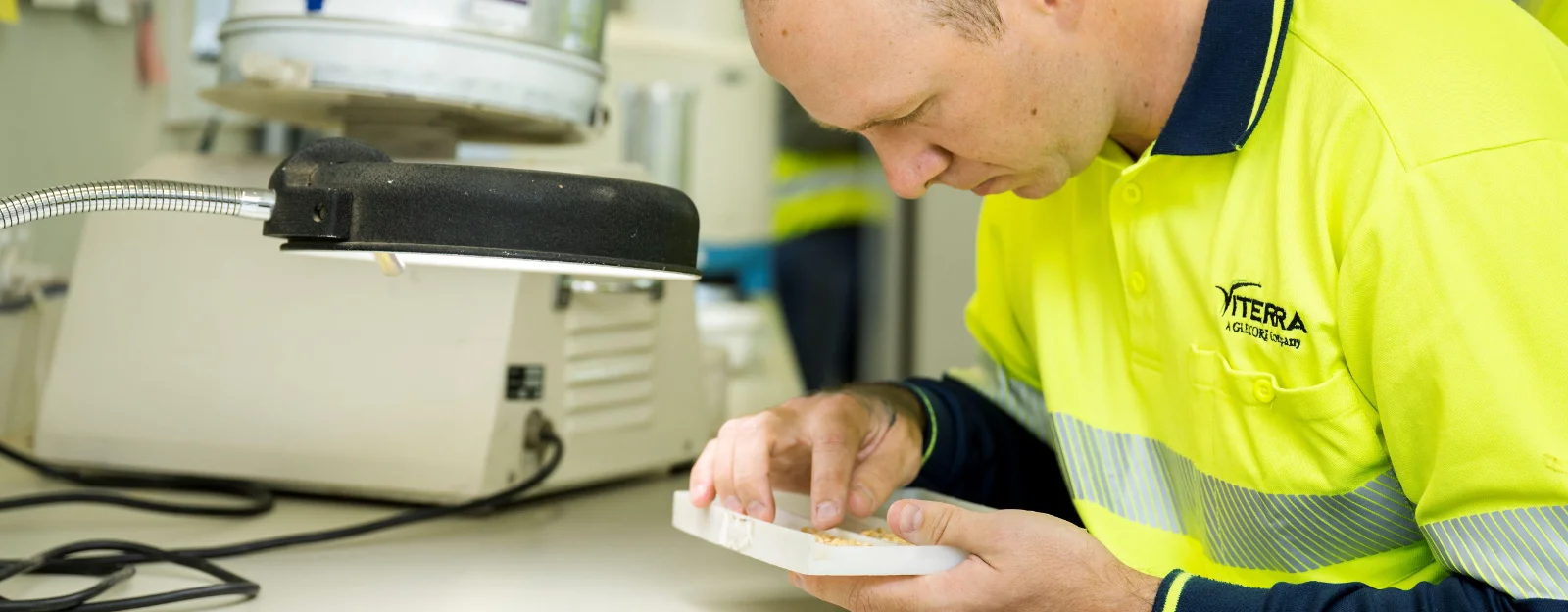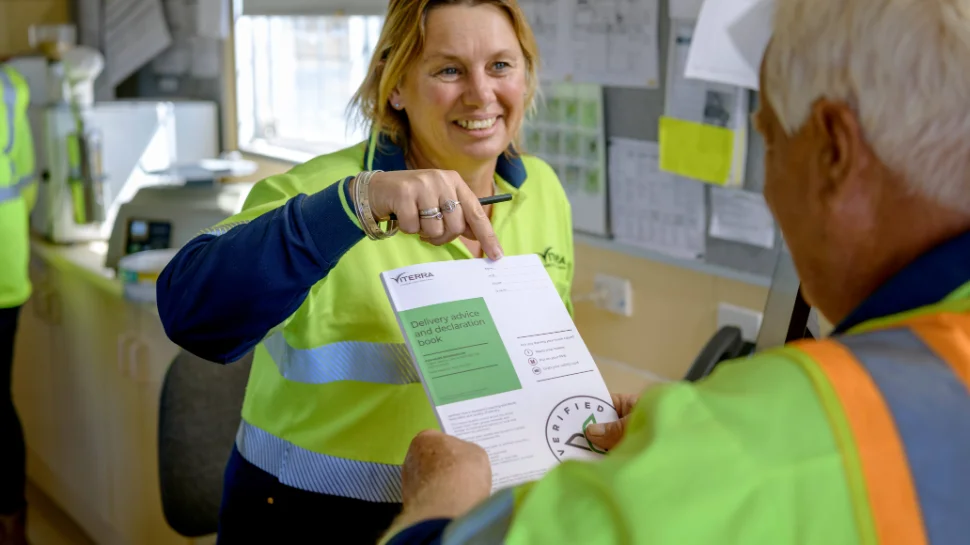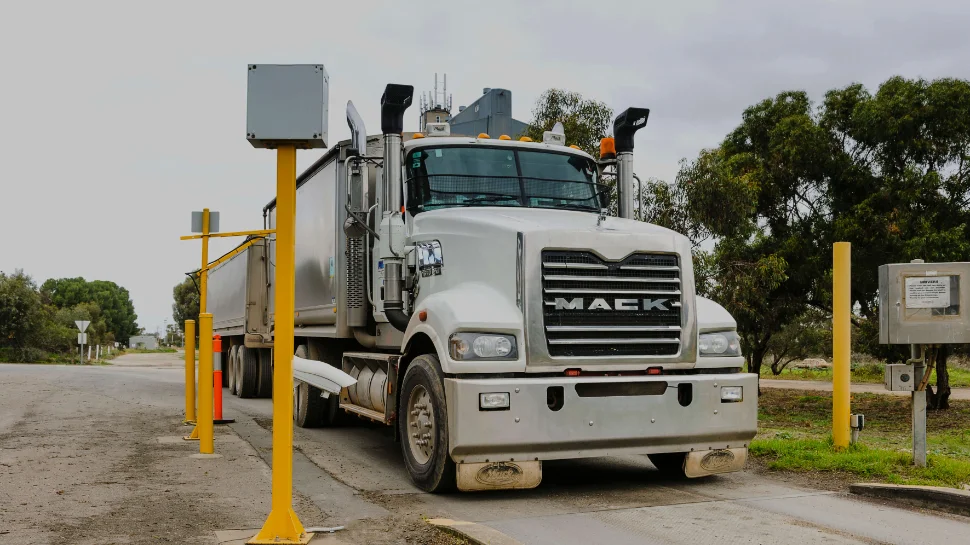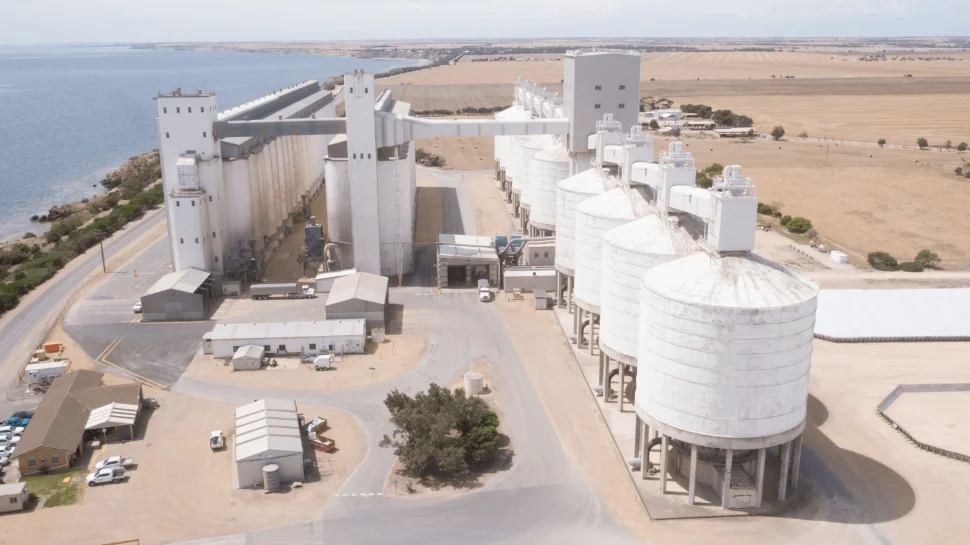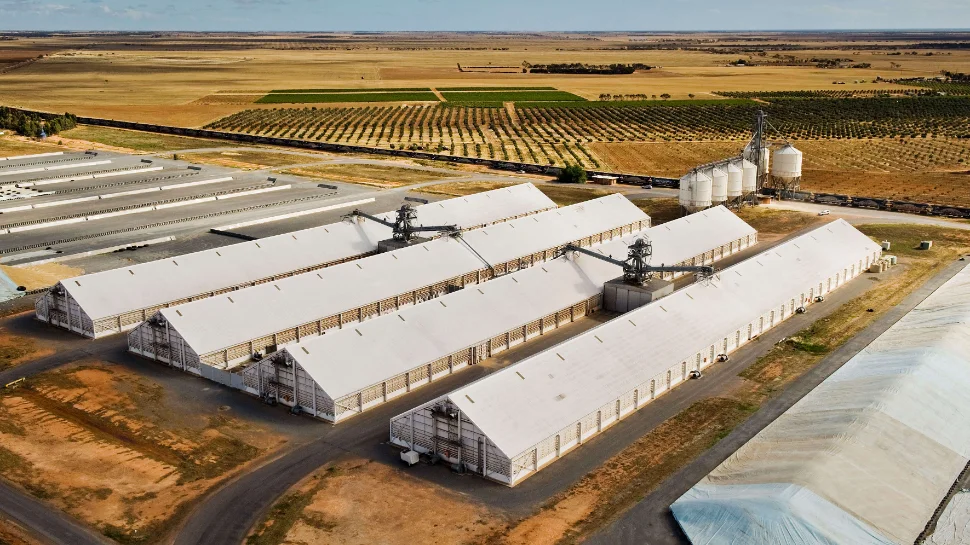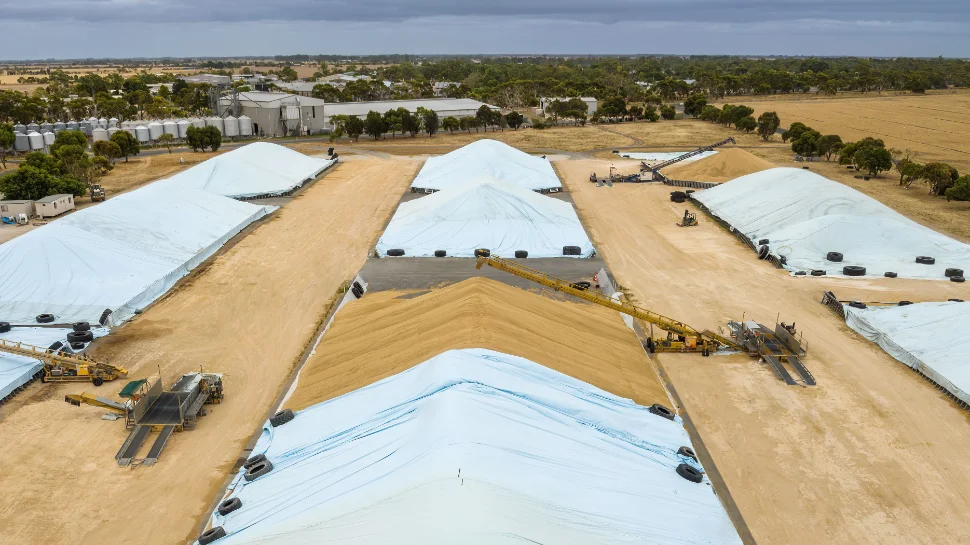This page shows information relevant to our sites in South Australia and western Victoria. Visit bunge.com/Australia for information about delivering to Bunge’s Western Australian sites.
Our classification process and receival standards are based on industry guidelines and maintaining market access.
We are constantly reviewing and adapting our classification process to allow growers to deliver while ensuring South Australian grain in our network meets end use customer needs.
Our permanent and harvest employees go through extensive classification training each year, and our laboratory tests site samples daily throughout harvest to ensure consistency across our network.
The commodity classification transfer procedure allows for a load classified at one site to be received at a second site while retaining its original classification (subject to nil tolerance contaminants or defects).
This transfer procedure applies when a commodity is presented to a site but the load is classified as a grade not being received at the site. A transfer can then be requested to deliver the load to an alternate site accepting that grade.
The grade on the commodity classification transfer will be in line with receival standards not accounting for the wheat and barley dynamic binning tolerances. However, the load will be eligible for wheat and barley dynamic binning at the transfer receival site provided the higher grade segregation is available, and the rolling stack average of the higher grade meets the receival standards.
Growers can utilise the commodity classification transfer procedure for port terminal deliveries where shipping grades are being accepted from upcountry sites. This will ensure that the load is within specification and will not be declined at port due to the lower grade not being accepted.
Loads being transferred do not have priority over other loads in the sampling queue.
If a nil tolerance contaminant or defect is found in the load at any stage of the receival process, the load will be declined.
Commodity classification transfers will not be available for genetically modified (GM) canola varieties.
Bunge subscribes to the National Residue Survey (NRS) – a crucial part of the Australian system for managing risks of chemical residues in Australian food products.
To support this programme, during harvest we conduct chemical residue testing on composite partition samples. We may also collect individual grower load samples for chemical residue traceability.
Growers play a critical role in upholding South Australia’s grain quality. When applying chemicals, at all times growers should adhere to:
- withholding periods
- label instructions
- application rates
- safe operating procedures
If a breach to the Australian maximum residue limit (MRL) is detected, Bunge is obliged to provide its traceability results to Biosecurity South Australia which may trigger an investigation. Any breaches to Australian MRLs may also be followed up through Bunge's contaminated grain process.
Information on MRLs including current Australian and international MRLs can be found on Grain Trade Australia's website with information from the National Working Party on Grain Protection.
The classification retest procedure is used when a grower (or their representative) requests a retest for a quality parameter where the result is outside the anticipated grade for their load at the point of receival.
The classification retest procedure is in line with the Grain Trade Australia (GTA) disputing classification technical guideline. This includes the quality parameters that can be disputed, the sample to be assessed and the allowable variation of the initial result from the standards limit.
Each variety has different physical qualities, processing performance and end product quality for customers and end users.
Bunge participates in varietal identification programmes where grower load samples will be randomly selected at sites across the Bunge network and tested to ensure varietal declarations have been correctly recorded.
This information is forwarded to relevant industry research groups and is used to establish appropriate codes of practice for the delivery of grain.
2025/26 wheat receival standards and key information
We follow Grains Australia’s wheat variety master list to determine our variety list, if you deliver a variety that is not on our list, the highest grade you can achieve is SFW1 feed grade.
View the 2025/26 variety list including varieties planned for removal next season.
2025/26 barley receival standards and key information
We are continuing to trial technology which allows us to test the variety of malt barley samples in our laboratory. This innovative technology will help us confirm the variety of malt deliveries to ensure there is no varietal contamination within our segregations.
Maltsters require malt barley of a single variety to produce high quality malt and are investing in varietal recognition technology to confirm this. To maintain access to the premium malting market for SA growers, we must ensure we supply malt barley with high varietal purity.
We will continue to test harvest partitions regularly to ensure malt barley meets the specific requirements of end use customers, including variety.
We retain samples of all malt barley deliveries for traceability and varietal testing. If we find varietal contamination within our malt barley harvest partitions, our contamination procedure will be implemented as the segregation may need to be downgraded to feed.
2025/26 canola receival standards and key information
View our draft segregation plan to learn where we are planning to receive GM and non-GM canola this harvest.
You must declare if you are delivering GM canola for all deliveries. Bunge can only receive varieties of canola from the Australian Oilseeds Federation approved list for varieties.
GM canola will be received into the grade name, CAGM, and non-GM canola will continue to be received as CANO.
As GM and non-GM supply chains are being managed separately, commodity classification transfers are not available for GM canola.
Growers are reminded of the importance of maintaining strong hygiene practices when storing, handling, transporting and harvesting GM canola, as well as accurately declaring the variety and if it is genetically modified when delivering to our sites.
To ensure we meet the requirements of end users and maintain market access for growers’ canola, we test non-GM canola harvest partitions for GM canola and retain samples of all canola deliveries for traceability.
Where we detect GM canola in non-GM segregations our contamination procedure will be implemented, including testing individual samples to determine the source of contamination.
The receival fee for GM canola is slightly higher than non-GM canola due to the additional testing, cleaning processes and separate handling that is required to manage it.
From the 2024/25 harvest, we will not receive canola treated with haloxyfop. We advised this change prior to last harvest, giving growers the opportunity to review their chemical use to ensure access is maintained for SA canola to the premium European Union (EU) market.
Last year, the EU announced its intention to reduce the MRL for haloxyfop on canola. This has since been confirmed, and the regulatory change will come into effect from 19 August 2024. More information in Grain Trade Australia’s market update.
As we will not receive haloxyfop treated canola, we will continue to require a haloxyfop declaration for all canola deliveries. Accurate declarations are crucial to ensure we can maintain market access for SA growers’ grain into the EU market.
We retain samples of all canola deliveries for traceability and chemical residue testing. We monitor for haloxyfop within our network, and our contamination procedure will be implemented if grain treated with haloxyfop is delivered.
Industry advised growers to not use haloxyfop on canola from the 2023/24 season onwards to meet the EU’s expected new MRL. We thank growers for transitioning to alternate herbicides, helping us maintain access to this premium market for all SA growers.
The mould (MD) quality parameter for canola has been renamed to discoloured seed coat (DSC).
The receival standards and testing method have also been updated from max count 30/1,000 seeds to max count 3/100 seeds, making the classification process quicker.
There is no change to the definition of DSC within the visual standards recognition guide or tolerance.
This name change reflects that multiple factors can cause grey/white colouring in canola.
2025/26 pulses receival standards and key information
Lentils
Lentil receival standards - SA sites
Lentil receival standards - Dooen
Faba beans
Field peas
Chickpeas
Lupins
We’ve increased the total defective grain tolerance for A grade lentils, allowing you to achieve a higher grade.
Lentil deliveries with total defective grain between 4.5 and 5% will now achieve A grade instead of B grade, meaning you can achieve a higher value for their delivery and no tonnage deductions will be applied.
We have also reduced the tonnage deduction to 1% instead of 1.5% for B grade lentils with total defective grain between 5.1 and 6%.
Deliveries also need to meet all other receival standards for the relevant grade.
Our continued investment in our supply chain has enabled us to change how we store lentils and increase our service offering to farmers, while continuing to meet buyers’ quality requirements and maintain market access for SA and western Vic grain.
In May 2024, there was industry news of international markets beginning discussions about reducing the carbendazim fungicide MRL to zero.
Currently no changes have been made. Carbendazim can still be used on pulse crops (as per the label) and it cannot be used on cereals and oilseeds.
Industry advice is to use alternative fungicides on pulses and transition away from carbendazim. Growers should speak with their farm advisor for advice regarding use and alternate options.
We will continue to conduct chemical residue testing on composite partition samples for all commodities throughout harvest to ensure we can maintain market access for South Australian (SA) grain. If we detect contaminated grain in our segregations, our contamination procedure will be implemented. Through our traceability programme, we can trace chemical use back to the individual grower.
